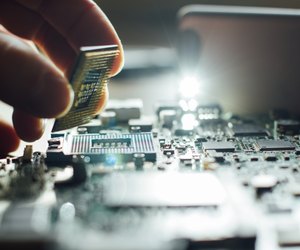How Does a CPU Work?
The CPU of a PC, or focal handling unit, is as often as possible contrasted with the human cerebrum since it's the focal control of the PC. The CPU performs PC activities by quickly executing project guidelines. The speed of the CPU has an enormous impact in deciding the intensity of a PC. Each new age of chip includes an all the more dominant CPU that can execute directions more rapidly than the past age.
Establishment of processor in CPU attachment
How a Computer Processor Works
The working of the CPU is characterized as a three-advance procedure. Initial , a guidance is gotten from memory. Second, the guidance is decoded and the processor makes sense of what it's being advised to do. Third, the guidance is executed and an activity is performed. These three stages rehash in a cycle that starts with the CPU getting the following guidance. The means are alluded to as the guidance cycle of the CPU.
 The CPU utilizes a program counter to monitor which guidance to get
The CPU utilizes a program counter to monitor which guidance to get Activities Performed by a CPU
The CPU executes guidelines that play out a lot of essential activities. There are number juggling tasks like expansion, subtraction, augmentation and division. Memory tasks move information starting with one area then onto the next. Legitimate activities test a condition and settle on a choice dependent on the outcome. Control activities influence different parts of the PC. These essential sorts of activities, executed rapidly, enable a PC to play out a wide scope of capacities. The accurate number of activities upheld by a CPU relies upon its engineering.
How the CPU Uses Memory
PC memory alludes to the territory where information and projects are put away. Memory isn't a piece of the CPU, however the CPU must interface intimately with it. There are two kinds of PC memory: essential, or principle, and auxiliary. The CPU depends intensely on fundamental memory for putting away program guidelines and the information the directions work on. Fundamental memory is transitory in nature and just holds guidelines and information for a program while the program is executing. Optional memory is the more lasting stockpiling gave by hard drives and blaze drives.
A segment of the CPU known as the control unit is answerable for moving guidelines and information from auxiliary stockpiling into primary memory preceding guidance execution. The control unit likewise moves the aftereffects of a guidance to auxiliary stockpiling.




0 Comments